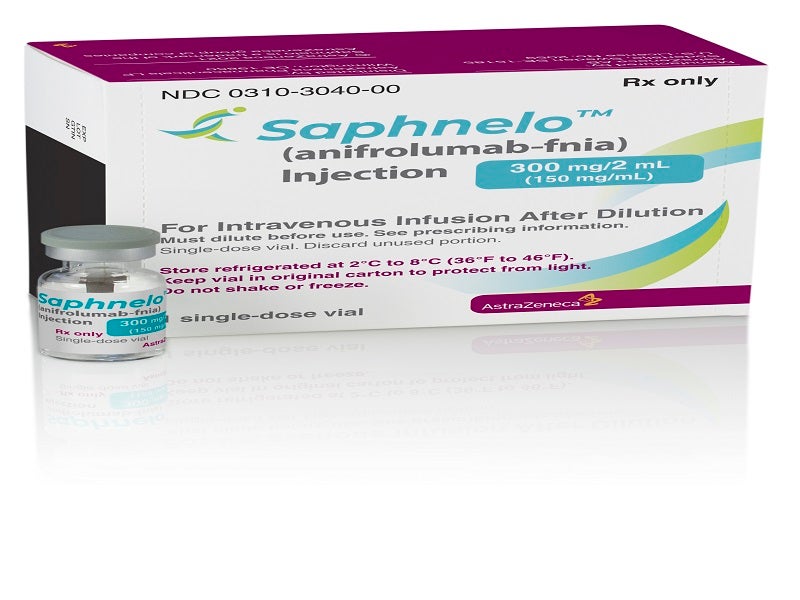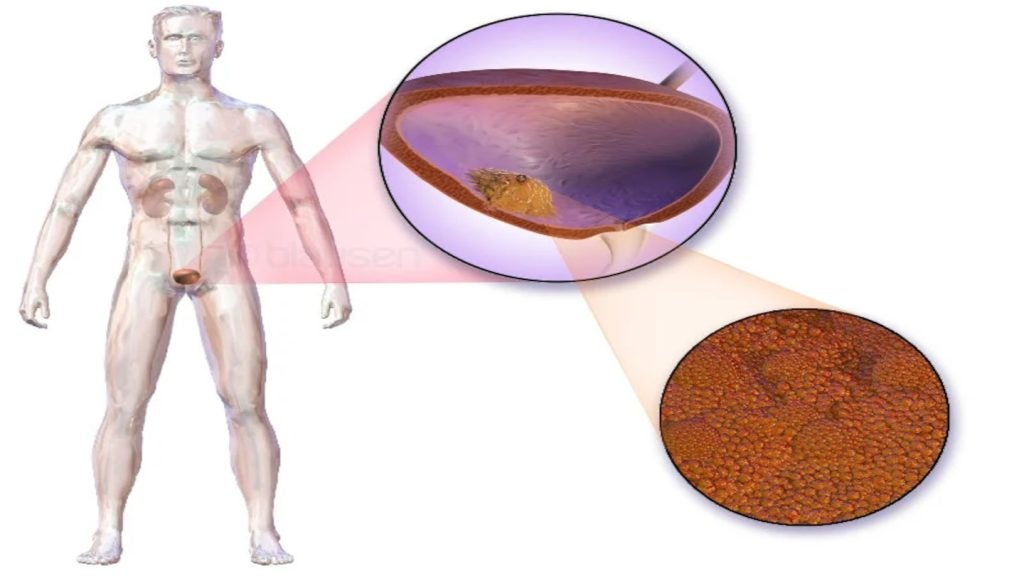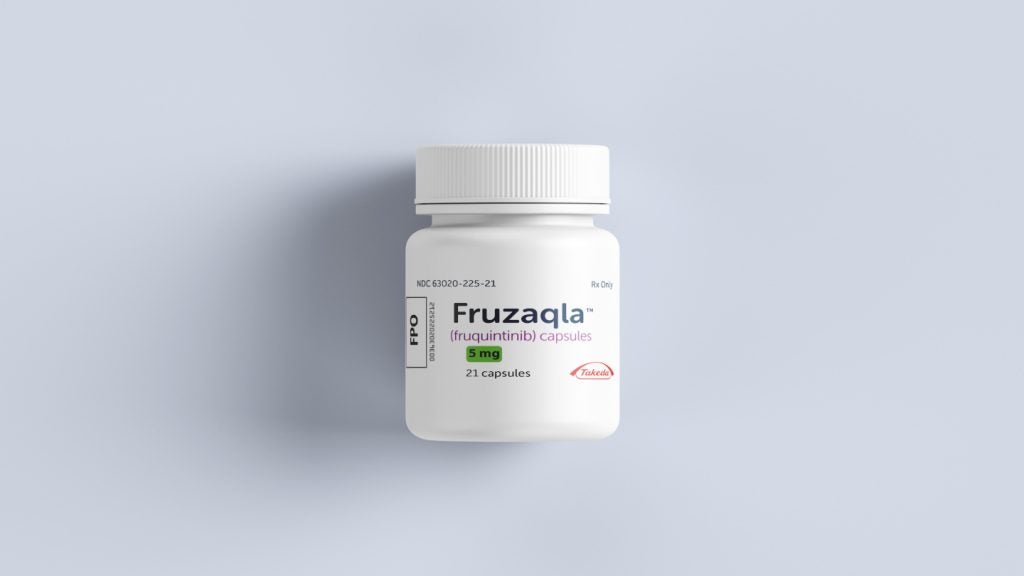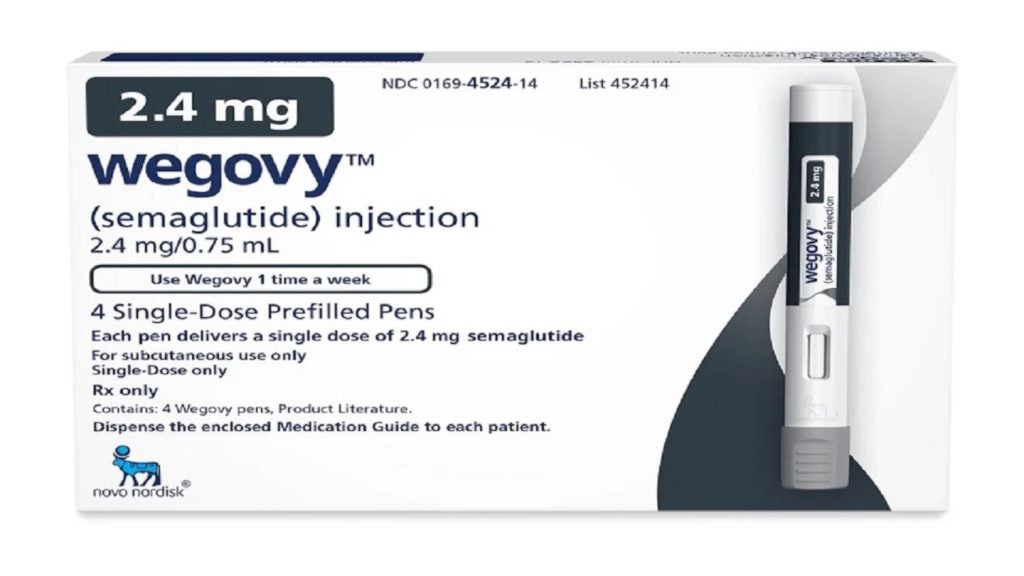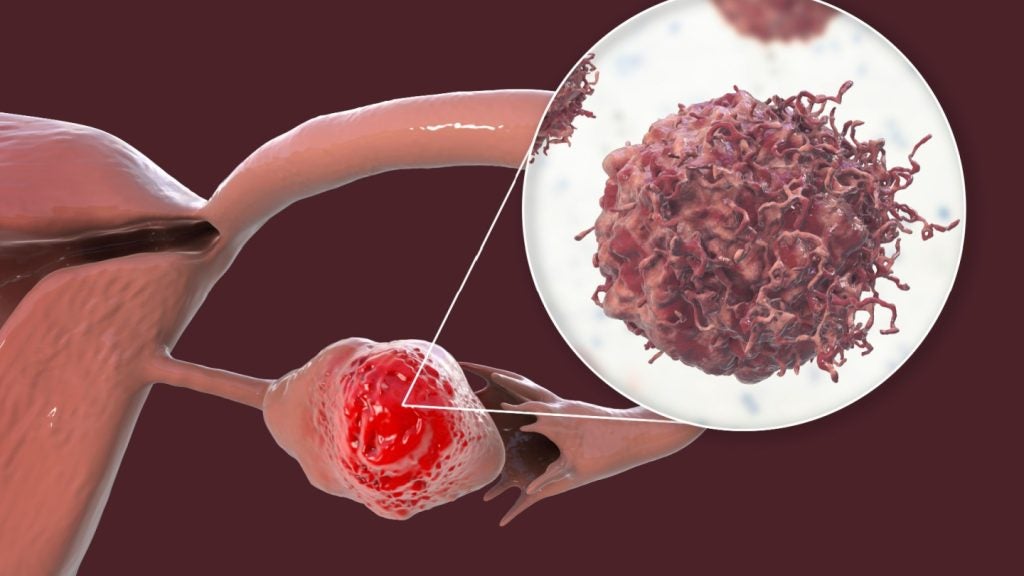Saphnelo (anifrolumab-fnia) is a first-in-class type I interferon (type I IFN) receptor antagonist indicated for the treatment of moderate to severe systemic lupus erythematosus (SLE) in adult patients.
In 2004, British-Swedish pharmaceutical company AstraZeneca acquired global rights to Saphnelo from Medarex through an exclusive licence and collaboration agreement. Medarex was later acquired by Bristol-Myers Squibb (BMS) in 2009. Under the terms of the agreement, BMS receives royalty payments from AstraZeneca on Saphnelo’s sales based on geography.
The drug is available in 300mg/2ml (150mg/ml) dosage strength as a clear to opalescent, colourless to slightly yellow solution in a single-dose vial for intravenous infusion.
Regulatory approvals for Saphnelo
In July 2020, AstraZeneca submitted a biologics licence application to the US Food and Drug Administration (FDA) seeking approval for Saphnelo (anifrolumab-fnia) injection to treat SLE.
In August 2021, the FDA approved the drug for the treatment of adults with moderate to severe SLE who are undergoing standard of care treatment.
Saphnelo is also under regulatory review for SLE in the European Union and Japan.
Causes and symptoms of SLE
SLE is a rare, chronic autoimmune disease that occurs when the immune system attacks healthy tissue in the body. Type I IFN plays a key role in the pathogenesis of lupus.
SLE accounts for around 70% of all cases of lupus. The disease impacts up to 300,000 individuals in the US alone, while females are more prone to the condition than males. SLE disproportionately affects minority populations, including African-American, Hispanic and Asian people.
Patients with the autoimmune condition may experience long-term organ damage and poor health-related quality of life. SLE can cause acute or chronic inflammation of multiple organs or organ systems in the body.
Common symptoms of SLE include skin rashes, pain or swelling in the joints, swelling in the feet and around the eyes, extreme fatigue, low fevers, and a butterfly-shaped rash on the cheeks and nose.
Saphnelo’s mechanism of action
Anifrolumab-fnia is a human immunoglobulin gamma 1 kappa (IgG1κ) monoclonal antibody that selectively binds to subunit 1 of type I IFN receptor (IFNAR1). This inhibits type I IFN signalling, causing the biological activity of the type 1 IFNs to be blocked.
Clinical trials on Saphnelo
The FDA’s approval of Saphnelo was based on efficacy and safety results from the multi-centre, randomised, double-blind, placebo-controlled, Phase III clinical trials, TULIP-1 and TULIP-2, as well as the Phase II trial MUSE. The trials enrolled patients with moderately to severely active SLE who were receiving standard therapy.
In the TULIP-1 trial, 457 patients were randomised in a 1:2:2 ratio to receive anifrolumab-fnia 150mg, 300mg or placebo via intravenous infusion every four weeks, in addition to standard therapy. In the TULIP-2 trial, 362 patients were randomised in a 1:1 ratio to receive anifrolumab-fnia 300mg or placebo via intravenous infusion every four weeks.
Both trials’ primary endpoint was the improvement in disease activity at 52 weeks, measured by SLE Responder Index (SRI-4) in TULIP-1 and the British Isles Lupus Assessment Group-based Composite Lupus Assessment (BICLA) in TULIP-2.
Anifrolumab-fnia failed to achieve the primary endpoint on the SRI4 composite measure in the TULIP-1 trial. Results from the TULIP-2 trial, however, showed a statistically significant and clinically meaningful reduction in disease activity in patients at week 52, with 47.8% of the patients responding to anifrolumab-fnia 300mg compared with 31.5% of patients on placebo.
In the MUSE trial, 305 patients were randomised to receive a fixed-dose intravenous infusion of 300mg Saphnelo, 1,000mg Saphnelo or placebo every four weeks, in addition to standard therapy for 48 weeks.
In all the studies, more patients treated with Saphnelo achieved a reduction in overall disease activity across organ systems and demonstrated a sustained reduction in the use of oral corticosteroid (OCS), a standard therapy, compared with placebo.
The most frequently reported adverse reactions in patients across all the trials were nasopharyngitis, upper respiratory tract infection, bronchitis, infusion-related reactions, herpes zoster and cough.
Phase III trials have also been initiated to evaluate the subcutaneous delivery of the drug to the SLE patients, while the drug’s potential to treat lupus nephritis, cutaneous lupus erythematosus and myositis is also being explored.

